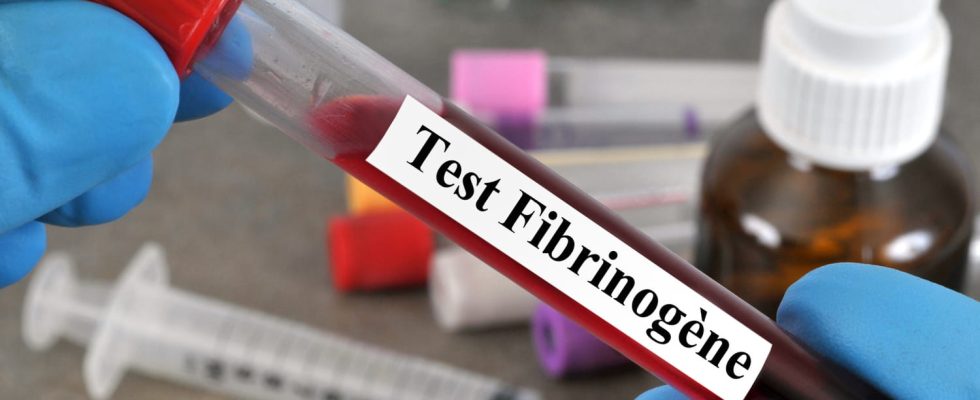Fibrinogen is a protein contained in blood plasma and involved in blood clotting. How is it synthesized? What are the causes of a low or high rate?
What is the definition of fibrinogen?
THE Coagulation factor IOr fibrinogenis a protein found in blood plasma and made by the liver. Fibrinogen is converted into fibrin by the action of another plasma protein, thrombin. This fibrin is involved in particular in the formation of the blood clot during the coagulation phenomenon which helps to stop the bleeding. It thus forms the blood clot, by interacting with platelets and other coagulation factors. However, it is also involved in inflammation and infections occurring in the body. “In the event of an increase, one can suspect many pathologies such as infection, inflammatory disease or cancer. In case of decrease, one can suspect liver failure since much of its synthesis comes from the liver“, explains Dr Nicolas Stocker, President of the Association of Residents in Hematology.
The blood test for fibrinogen levels is prescribed when a coagulation disorder is suspected, in order to assess the severity and find the cause. The assay of the fibrinogen level is carried out on a venous blood sample (blood test), in a medical analysis laboratory. The assay is a routine measurement with results usually obtained within the day.
Do you have to be fasting to measure the fibrinogen level?
It is not necessary to be fasting to measure the fibrinogen level.
What is the standard?
Normal values for fibrinogen levels in the blood are between 2 and 4 g/L in adults and lowered from 1.50 to 3.50 g/l in young children. Certain parameters may cause these standards to vary:
- ethnicity, sex, age and weight;
- The consumption of alcohol and tobacco increase the level of fibrogen;
- Oral contraceptives and hormone therapy for menopause (estrogen) can cause up to +30% increase in fibrinogen levels.
- Blood transfusions can interfere with fibrinogen level measurements within a month of the transfusion.
- Medications (anabolic steroids, androgens, barbiturates, thrombolytics, sodium valproate, etc.) can lower the blood level of fibrinogen.
What is the normal rate during pregnancy?
Plasma fibrinogen levels increase dramatically during pregnancy. This rate can be multiplied by 1.5 to 2.
What does increased fibrinogen mean?
In general, an increase in the level of fibrinogen (called hyperfibrinogenemia) can be observed:
- During inflammation
- In certain infectious diseases (pneumonia, etc.)
- In acute articular rheumatism
- In autoimmune diseases (lupus)
- After a myocardial infarction
What does low fibrinogen mean?
Conversely, the decrease in the level of fibrinogen (called hypofibrinogenemia) may reflect:
- From a genetic disease
- Severe liver failure (hepatitis, cirrhosis)
- Coagulation disorders (disseminated intravascular coagulation or defibrination syndrome)
- A degradation of fibrinogen (or “fibrinolysis”), more particularly in cancer.
Thanks to Dr Nicolas Stocker from the Department of Clinical Hematology and Cellular Therapy at the Center Hospitalier Universitaire Saint-Antoine (AP-HP, Paris) and President of the Association of Residents in Hematology.
